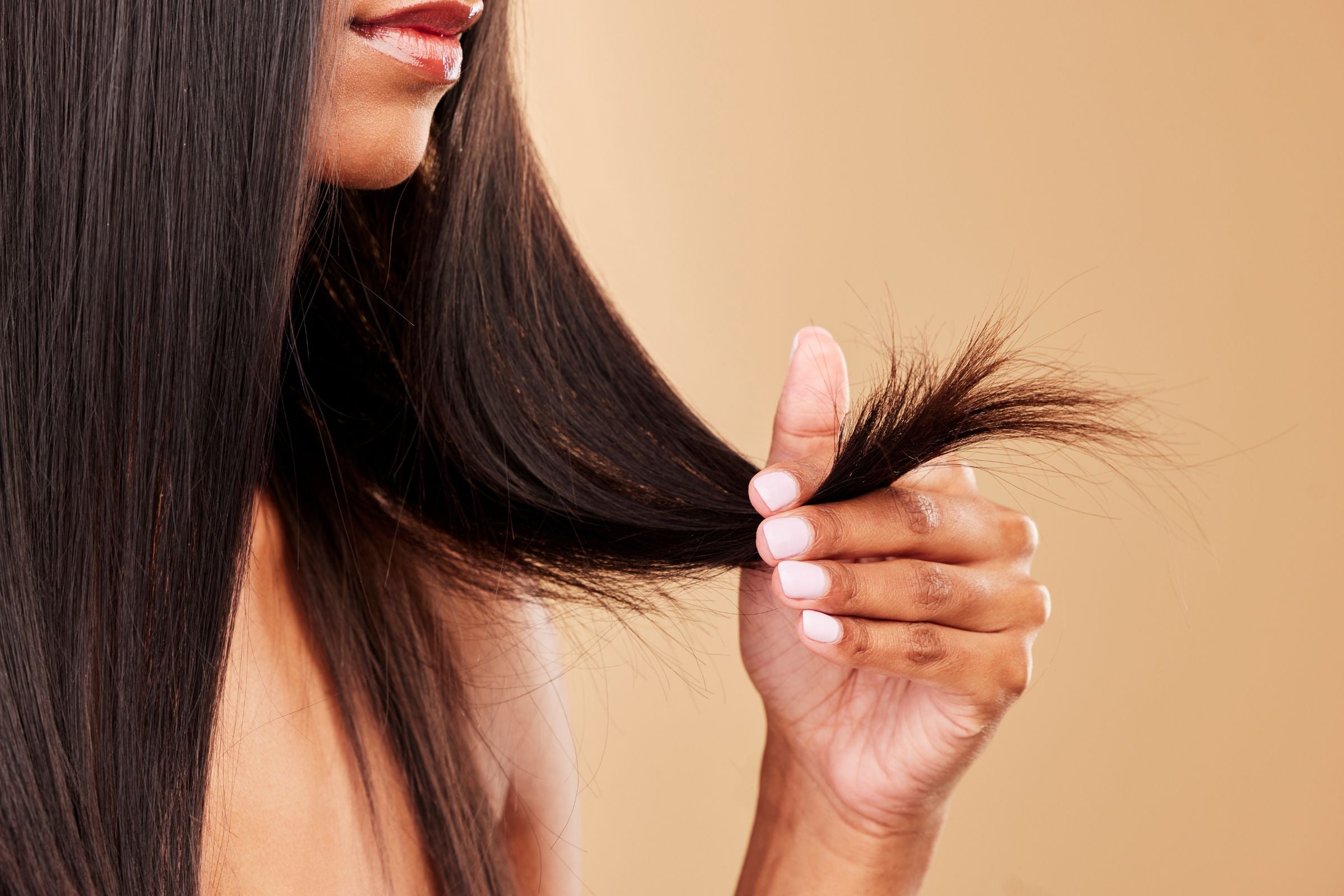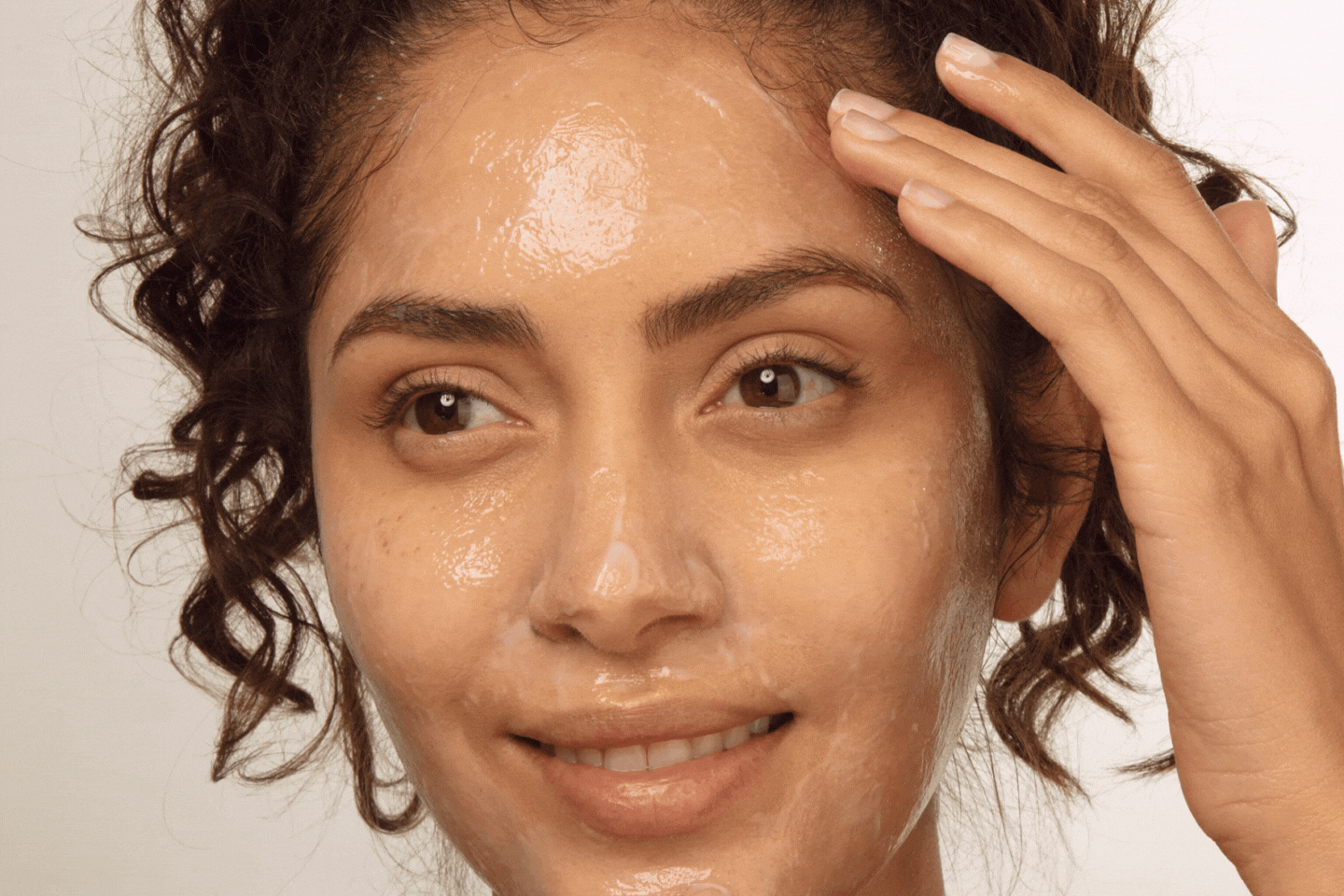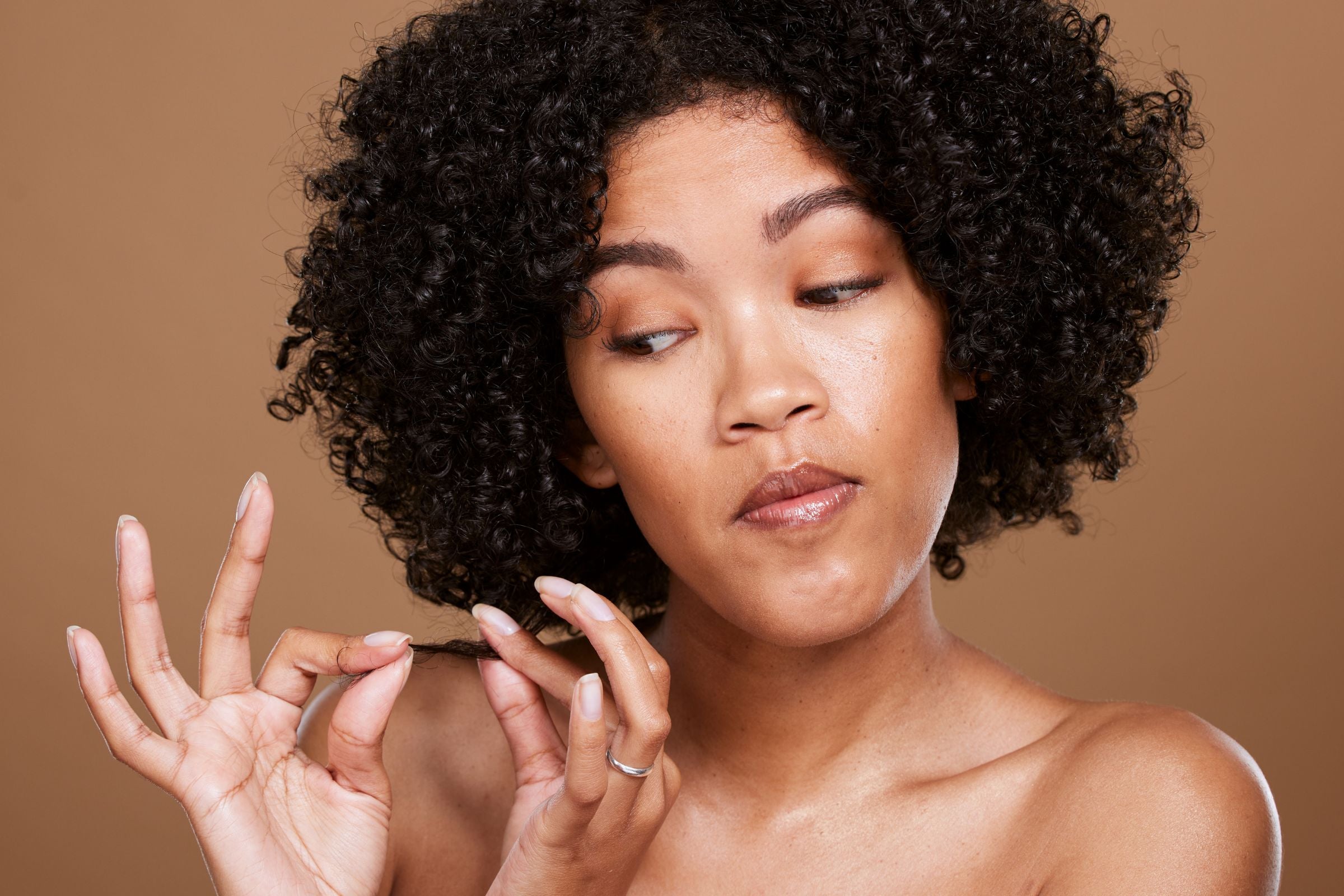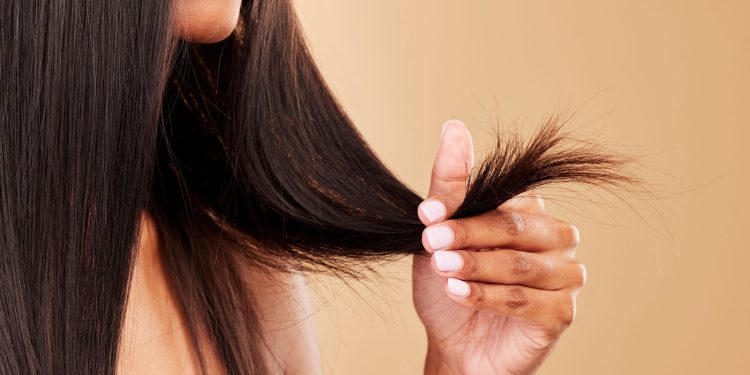Master the Art of Hair Health: Your Ultimate Guide to Banishing Split Ends
Posted on October 5, 2024 Written by: 100% PURE®

We’ve all been there – eagerly watching for signs of growth, hoping our hair will finally reach that coveted length, only to feel frustrated when it seems to stall or break off. It’s disheartening to invest time, money, and care into your hair only to find split ends sabotaging your efforts, making your hair look frizzy, weak, and far from the smooth, sleek style you envisioned.
But achieving your hair goals doesn’t have to be out of reach. Understanding how to spot and prevent split ends is the key to maintaining length and keeping your locks healthy. From debunking common myths about hair care to implementing targeted strategies for prevention and management, you can take control of your hair’s future. In this guide, we’ll explore what causes split ends, how to identify them early, and the steps you can take to stop them in their tracks, so you can finally achieve the long, healthy hair you’ve been dreaming of.
Understanding Split Ends
Split ends are the ultimate enemy of healthy hair. They occur when the protective outer layer of your hair, known as the cuticle, becomes damaged and begins to fray. Once the strand splits, it continues to unravel, making your hair look dry, frizzy, and unhealthy. But split ends aren’t always as simple as a single strand breaking in two. There are different types of split ends, each with its own cause and characteristics.
- Basic split: The most common type, where the strand splits into two at the tip.
- Tree split: Multiple small splits branch off from a single strand, often indicating severe damage.
- Forked split: The hair divides into several sections along its length, showing extensive wear and tear.
A microscopic view of hair damage reveals the real story—your hair fibers break down as they lose moisture and proteins. Once the structure weakens, the ends split and can even break further up the hair shaft if left untreated.
But what causes these splits in the first place?
Mechanical damage: Daily brushing, detangling, and even towel-drying your hair can weaken it over time, especially if you’re being too rough. Tugging at knots or using a brush on wet hair can lead to split ends forming faster.
Chemical damage: Regular use of hair color, relaxers, or perms can break down the bonds that hold hair strands together. Overuse of heat styling tools like flat irons and curling wands can also rob your hair of its moisture, making it more prone to splitting.
Environmental factors: Sun exposure, wind, and pollution all take their toll on your hair. UV rays weaken the hair cuticle, while harsh weather conditions like wind and pollution can strip your hair of its natural oils, leaving it brittle and vulnerable to damage.
Understanding what split ends are and how they form gives you the knowledge to take action. Knowing their causes is the first step toward preventing and managing them, which is essential for keeping your hair healthy and on track to reach your goals.

Identifying Split Ends
Spotting split ends early can be the difference between healthy hair and hair that constantly feels dry and damaged. While split ends may seem small and insignificant at first, they tend to worsen over time, leading to more breakage and ultimately hindering your hair goals. Here’s how to recognize the warning signs before they cause too much damage:
Visual Cues of Split Ends:
One of the most obvious ways to identify split ends is by examining the tips of your hair.
- Single strand splits: This is the classic sign—one hair strand splits into two at the end, signaling the start of breakage.
- Multiple splits (tree branch effect): Some strands may show several splits extending from one hair, resembling a tree branch, which indicates more advanced damage.
- White dots at the end of hair strands: These tiny, white bulbs at the tips of your hair signal that breakage is imminent. These dots indicate the hair is weakening and could split or break off soon.
Texture Changes:
While visual signs are the easiest way to spot split ends, changes in the texture of your hair can also give you clues.
- Roughness and dryness at the ends: Run your fingers through your hair. If the ends feel coarse or dry compared to the rest of your strands, split ends are likely forming. Healthy hair feels smooth and consistent from root to tip, while damaged hair starts to lose that silkiness.
- Increased tangling and difficulty in styling: If you find your hair tangling more easily, especially near the ends, or if it’s becoming harder to style, split ends could be the cause. Damaged ends tend to stick together and create more knots, making your hair harder to manage.
By regularly checking for these signs, you’ll be better equipped to catch split ends early. Spotting them before they lead to widespread breakage will help keep your hair healthier, more manageable, and one step closer to achieving your hair goals.
The Style vs. Health Dilemma
We all want that perfect hairstyle—sleek, straight hair or voluminous curls—but heat styling often feels like a necessary evil. The desire to create flawless, salon-worthy looks can conflict with the need to protect your hair from damage. It’s a dilemma every person striving for their hair goals faces: How can you enjoy the styles you love without sacrificing the health of your hair?
The Desire for Styled, Heat-Treated Hair
Whether it’s flat-ironing your hair for a smooth finish or curling it to achieve bouncy waves, heat tools are often the quickest way to get the look you want. Heat styling gives your hair immediate transformation, but with frequent use, you may notice the damage creeping in—split ends, frizz, and breakage.
Concern About Damaging Hair Through Styling Practices
The more you heat-style, the more vulnerable your hair becomes to damage. High temperatures can strip the hair of its natural oils and moisture, leaving it brittle and more prone to split ends. The constant cycle of styling and repairing can leave you wondering: Is it worth risking long-term hair health for short-term style satisfaction?
Balancing Aesthetic Goals with Hair Health
The good news is, that you don’t have to choose between great style and healthy hair—you just need to find the right balance.
- Limit heat exposure: Instead of daily heat styling, try to stretch out your styles for multiple days or use lower heat settings. Air-dry your hair whenever possible and reserve heat tools for special occasions.
- Use protective products: Before using any heat tool, apply a heat protectant spray or serum to shield your hair from high temperatures. These products can minimize damage and keep your hair smoother, and longer.
- Invest in your hair’s health: Regular trims, deep conditioning treatments, and moisture-rich shampoos can help repair and prevent the damage that styling might cause. A healthy hair care routine allows you to enjoy styling without worrying about long-term harm.
Navigating Hair Care Myths
When it comes to split ends and hair health, there’s no shortage of advice—but not all of it is helpful. In fact, some common hair care myths could be holding you back from reaching your hair goals. To truly protect your strands, it’s essential to separate fact from fiction and avoid practices that do more harm than good.
Misconceptions About Trimming and Hair Growth
One of the biggest myths in hair care is that trimming your hair makes it grow faster. While regular trims won’t speed up hair growth, they are essential for preventing split ends from traveling further up the strand, causing more damage. Cutting off split ends helps maintain healthy length and prevents breakage, giving the illusion of faster growth because your hair remains intact. So, while trims won’t make your hair grow quicker, they will keep your ends looking fuller and healthier.
Ineffective or Damaging DIY Split-End Treatments
The internet is full of DIY hair treatments claiming to magically repair split ends. Some suggest using oils, homemade masks, or even burning the ends with a candle (a dangerous practice known as “velaterapia”). While nourishing oils and masks can help hydrate and temporarily smooth the hair, they don’t repair split ends. Once a strand is split, the only permanent solution is trimming it off. Trying these so-called remedies can lead to further damage or, in the case of methods like burning, put your hair at serious risk.
The Challenge of Finding Truly Effective Prevention Methods
With so many products and techniques promising to prevent split ends, it’s tough to know what actually works. The truth is, no product can entirely prevent splits if you’re regularly subjecting your hair to heat, chemical treatments, or environmental stress. However, there are proven steps you can take to minimize damage and protect your ends:
- Gentle handling: Avoid rough towel-drying or excessive brushing, especially when your hair is wet and more vulnerable to breakage.
- Hydration and protection: Use deep conditioning treatments and leave-in products that add moisture and strengthen your hair, reducing the chances of split ends forming.
- Trimming regularly: While it may feel counterintuitive, regular trims are key to keeping your hair healthy and preventing minor splits from turning into major breakage.
By steering clear of these common hair care myths and focusing on evidence-based strategies, you can make real progress in your fight against split ends, ultimately moving closer to the long, healthy hair you’ve been working toward.
Prevention and Management Strategies
Preventing split ends is the key to achieving your hair goals and maintaining the health and length you’ve worked so hard for. The good news is, that with the right strategies, you can protect your hair from unnecessary damage, keep split ends at bay, and manage the ones that do appear. Here’s how to incorporate prevention and management techniques into your hair care routine:
Proper Hair Care Techniques
Simple adjustments in how you care for your hair can make a significant difference in reducing split ends.
- Gentle detangling methods: Start by using a wide-tooth comb or your fingers to detangle your hair, especially when wet. This minimizes the risk of breakage. Always work from the tips to the roots to avoid tugging and pulling at knots.
- Correct brushing and combing practices: Avoid brushing too aggressively or using harsh bristles that can cause friction and split ends. Opt for a gentle, cushioned brush, and don’t over-brush—sometimes less is more.
Protective Sleeping Habits
Even your sleep routine can impact your hair health.
- Silk pillowcases: Switch to silk or satin pillowcases, which create less friction than cotton, reducing the chances of split ends forming overnight.
- Loose braids: Sleeping with your hair in a loose braid or ponytail can prevent tangling and breakage, protecting your ends while you rest.
Protective Styling
Minimizing manipulation and using protective hairstyles can keep your hair safe from damage.
- Low-manipulation hairstyles: Opt for styles like buns, twists, or braids that don’t require daily styling, helping to reduce the wear and tear on your hair.
- Using hair-friendly accessories: Avoid using rubber bands or accessories with metal parts, which can snag and break your hair. Instead, go for fabric-covered elastics or spiral hair ties that are gentle on your strands.
Nourishing Treatments
A well-nourished scalp and hydrated hair are better equipped to resist split ends.
- Deep conditioning routines: Regular deep conditioning treatments strengthen your hair from the inside out, helping to prevent damage. Look for treatments rich in proteins and moisture to reinforce your strands.
- Hair oils and serums for end protection: Apply lightweight hair oils or serums to your ends to seal in moisture and create a barrier against environmental stressors. Products like argan oil or silicone-based serums help protect your ends from splitting.
Heat Styling Precautions
Heat styling is one of the biggest contributors to split ends, but with the right precautions, you can still achieve beautiful styles without compromising your hair’s health.
- Using heat protectant products: Always apply a heat protectant before using any hot tools. These sprays or serums act as a shield, reducing the damage caused by high temperatures.
- Lowering heat settings on styling tools: You don’t need the highest heat setting to achieve great results. Try using lower temperatures on your flat irons and curling wands to minimize damage while still getting your desired look.
- Limiting the frequency of heat styling: Give your hair a break by saving heat styling for special occasions or important days. Incorporate no-heat styles, like braids or rollers, to achieve volume or curls without the risk of split ends.
By incorporating these prevention and management strategies into your routine, you’ll protect your hair from damage, minimize the appearance of split ends, and keep your hair healthier in the long run. Taking care of your hair today means fewer split ends tomorrow—and the closer you’ll be to reaching your ultimate hair goals.

100% PURE Hair Care Products for Split End Prevention
Achieving your hair goals is not just about avoiding damage—it’s about using the right products to nourish and protect your strands every day. 100% PURE offers a selection of products specifically designed to help prevent split ends and keep your hair healthy, strong, and beautiful.
Argan Oil
This nourishing oil is a go-to for sealing hair ends and protecting them from environmental stressors like sun exposure and pollution. Argan oil is rich in vitamins and antioxidants, creating a protective barrier that helps to prevent splitting while adding shine and moisture. Just a small amount on your end can make a big difference in reducing the appearance of split ends over time.
Burdock and Neem Healthy Scalp Conditioner
Split ends often start with weak, brittle hair fibers. This deep hydration treatment works to strengthen your hair from the inside out. Burdock and neem are both known for their ability to nourish the scalp and fortify hair, helping to reduce breakage and support overall hair health. By regularly using this conditioner, you’re giving your strands the moisture they need to stay resilient and prevent splitting.
Multi-Vitamin Healthy Hair Leave-In Conditioner
Daily wear and tear, such as brushing and environmental exposure, can weaken hair over time. The Multi-Vitamin Healthy Hair Leave-In Conditioner provides lightweight, leave-in protection designed to shield your ends throughout the day. Infused with essential vitamins and nutrients, it helps fortify your hair against breakage and keeps your strands looking smooth and healthy, all while preventing the formation of split ends.
Burdock and Neem Healthy Scalp Shampoo
A gentle cleanse is key to maintaining the strength and resilience of your hair from root to tip. The Burdock and Neem Healthy Scalp Shampoo offers a delicate yet effective wash that doesn’t strip your hair of its natural oils, which are vital for preventing dryness and split ends. This formula adds strength to your hair, helping to support its health and minimize damage as you wash.
Glossy Locks Glossing Shampoo
Buildup from styling products and environmental pollutants can weigh down your hair and lead to damage over time. The Glossy Locks Glossing Shampoo is a clarifying wash that removes this buildup while nourishing each strand. With ingredients that leave your hair shiny and soft, it helps to protect against the root causes of split ends, leaving your hair looking glossy and revitalized.
Using high-quality products like these from 100% PURE can play a major role in your split-end prevention strategy. By incorporating them into your routine, you’ll be one step closer to achieving your hair goals—healthy, beautiful, and free of split ends.
Your Path to Split-End-Free Hair
You’ve now learned the essential strategies to identify, prevent, and manage split ends, bringing you closer to achieving the healthy, long hair you’ve always wanted. Let’s quickly recap some of the key points:
- Gentle care techniques like proper detangling and brushing reduce mechanical damage that leads to split ends.
- Protective habits, including using silk pillowcases, low-manipulation styles, and hair-friendly accessories, help shield your hair from everyday wear and tear.
- Nourishing treatments such as deep conditioning, hair oils, and leave-in conditioners strengthen your strands and prevent splitting.
- Heat styling precautions ensure that you’re minimizing damage by using heat protectants, lowering tool settings, and limiting heat use.
By prioritizing these split-end prevention strategies, you’re not only protecting your hair from damage but setting yourself up for long-term success in reaching your hair goals. Remember, healthy ends are the foundation of strong, beautiful hair.
Now is the time to take action—start implementing your personalized split-end prevention routine today. Whether it’s swapping your pillowcase, using nourishing products, or being more mindful of how you treat your hair, every small step will help you keep split ends at bay. With consistency, you’ll be on your way to split-end-free, healthier hair that’s ready to grow.
Frequently Asked Questions
How often should I trim my hair to prevent split ends?
To prevent split ends, it’s generally recommended to trim your hair every 8-12 weeks. However, this can vary depending on your hair type and styling habits. Regular trims help remove damaged ends before they can worsen, promoting healthier hair growth.
Can split ends “heal” on their own?
Unfortunately, no. Once a split end forms, it cannot repair itself. The best way to deal with split ends is to trim them off. Using nourishing products can help prevent further damage, but trimming is the only way to fully eliminate split ends.
Are there any vitamins or supplements that can help prevent split ends?
Yes, certain vitamins and supplements can support overall hair health, which may reduce the likelihood of split ends. Biotin, vitamin E, omega-3 fatty acids, and collagen are known to strengthen hair, promote elasticity, and prevent breakage. However, a balanced diet and proper hair care are still the most important factors in preventing split ends.
How can I tell the difference between split ends and natural hair texture?
Split ends are typically easy to identify by their frayed or forked appearance. You might also notice white dots at the tips of your hair strands, which indicate splitting. Natural hair texture, especially if it’s curly or coarse, may feel rough but won’t display the same level of damage or multiple splits that split ends do.
Is it possible to have completely split-end-free hair, or is some damage inevitable?
While it’s nearly impossible to have completely split-end-free hair, especially with regular styling, you can minimize damage with proper care. Regular trims, protective styling, and nourishing treatments go a long way in keeping split ends under control and maintaining healthy hair.














